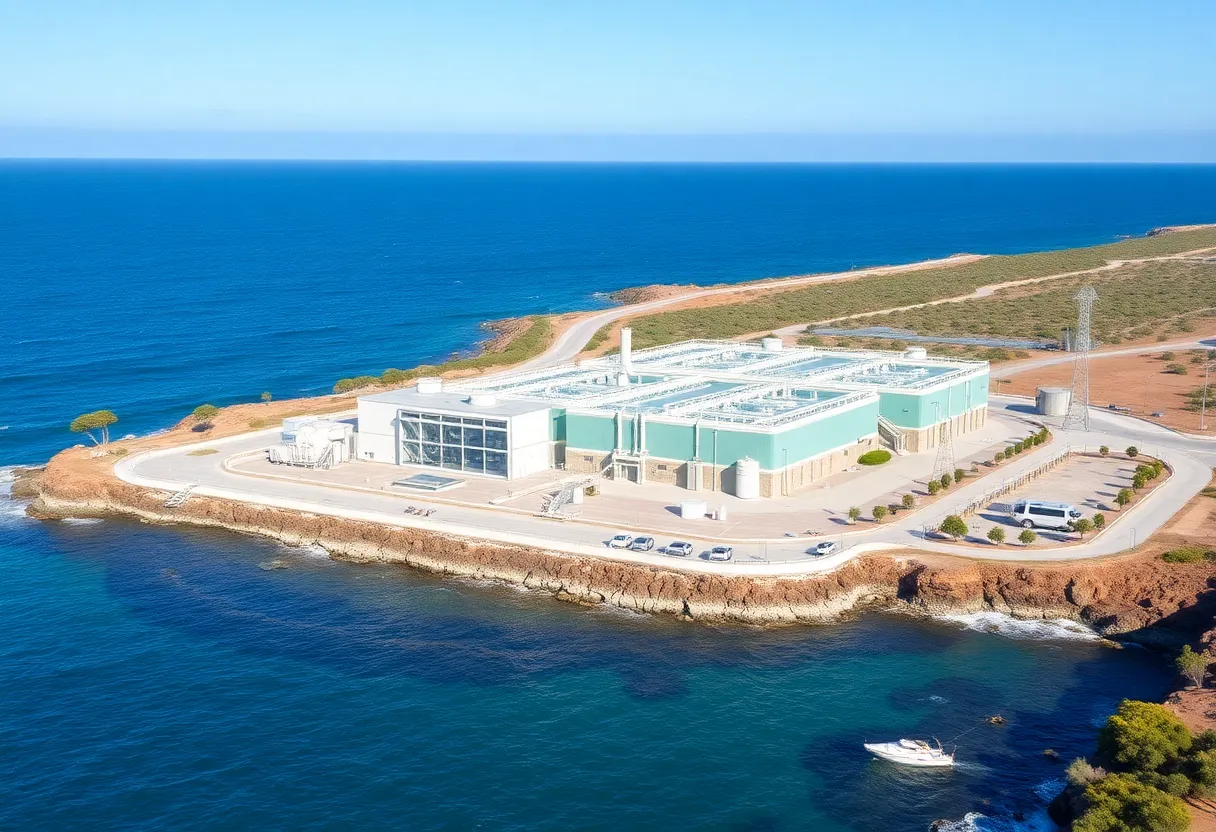Monterey Peninsula, California, August 16, 2025
News Summary
The California Public Utilities Commission has approved the Monterey Peninsula Water Supply Project to address a critical water supply deficit estimated at 815 million gallons per year by 2050. This desalination project aims to ensure a reliable water supply amid ongoing drought conditions. Despite opposition regarding data integrity and alternative solutions, the unanimous decision signals a commitment to enhancing water security in the region, with construction expected to begin by the end of 2025.
California Approves Desalination Project to Combat Water Shortage in Monterey Peninsula
The California Public Utilities Commission (CPUC) has voted to adopt Phase 2 Demand and Supply Estimates for the controversial Monterey Peninsula Water Supply Project. This move addresses a looming water supply deficit projected to reach approximately 815 million gallons per year by 2050, further underscoring the need for drought-resistant solutions in the region.
California American Water, responsible for implementing the desalination project, aims to deliver a stable and reliable water supply amidst ongoing drought conditions. The firm anticipates commencing construction on the desalination plant by the end of 2025.
Currently, Monterey Peninsula is constrained from expanding new water connections due to a mandate from the State Water Resource Control Board, which limits the amount of water that can be pumped from the Carmel River. Over-reliance on this river has led to environmental concerns and regulatory limitations.
Critical Need for Water Security
The ongoing challenges facing the Monterey Peninsula necessitate additional water supplies to ensure future water security. The CPUC’s unanimous ruling, supported by three out of five commissioners, culminated after extensive public discourse, where 165 individuals spoke, with 28 voicing opposition based on concerns about data integrity and the motivations behind profit. Despite the dissent, the decision aims to address future water needs and support continued economic growth in the region.
Project Controversy and Opposition
Opposition from various local water agencies and advocacy groups questioned the accuracy of demand estimates provided by California American Water. Administrative law judges adjudicating the case affirmed the need for 13,732 acre-feet of water by 2050. Critics argue that with potential surplus water becoming available after an existing cease-and-desist order is lifted, alternative water sources may be a more viable solution.
Supporters of the desalination project assert that it is vital for sustaining economic growth and fostering developments, such as affordable housing. They emphasize that fluctuating rainfall poses significant risks to current water supply levels, making this project essential for long-term viability.
Wider Strategy for Water Supply
California American Water’s desalination initiative is part of a broader strategy that includes enhancements in aquifer storage and recovery as well as extending the capabilities of the existing Pure Water Monterey facility. The overall goal aligns with the urgent need for infrastructure that can adapt to ongoing environmental changes and support community needs.
Regulatory Oversight and Approvals
The decision comes on the heels of a recent ruling from the Monterey County Superior Court, which upheld the California Coastal Commission’s authorization of necessary coastal development permits associated with the desalination project. This process has taken over six years of extensive reviews and public dialogues, aiming to ensure environmental safety and compliance with regulatory requirements.
Conclusion
The CPUC’s ruling reflects a commitment to finding solutions amid water scarcity, setting the stage for substantial infrastructural developments within the Monterey Peninsula to safeguard future water supplies.
FAQ
What is the Monterey Peninsula Water Supply Project?
The Monterey Peninsula Water Supply Project includes a desalination plant designed to combat looming water supply deficits in Monterey Peninsula by providing a drought-proof water source.
Why was the project approved by the CPUC?
The CPUC approved the project to address the projected water supply deficit of approximately 815 million gallons per year by 2050, highlighting the critical need for reliable water resources.
What opposition did the desalination project face?
Opposition stemmed from local water agencies and advocacy groups, who raised concerns about data accuracy and questioned the necessity of the project, suggesting alternative water sources could be more appropriate.
When is construction expected to begin?
California American Water expects to break ground on the desalination plant by the end of 2025, assuming all regulatory hurdles are successfully navigated.
What other components are part of California American Water’s strategy?
The desalination project is part of a more extensive strategy that also includes aquifer storage and recovery and the expansion of the Pure Water Monterey facility.
Key Features of the Desalination Project
| Feature | Details |
|---|---|
| Projected Water Supply Deficit | 815 million gallons per year by 2050 |
| Construction Start Date | End of 2025 |
| CPUC Decision | Unanimous 4-0 decision |
| Public Support/Opposition | 165 speakers; 28 opposed the project |
| Total Water Demand by 2050 | 13,732 acre-feet |
Deeper Dive: News & Info About This Topic
- KSBW: Monterey Peninsula Desalination Plant Approved
- Monterey Herald: Regulators Side with Cal-Am on Monterey Peninsula Water Supply
- Business Wire: Monterey Superior Court Affirms California Coastal Commission’s Approval
- Monterey Herald: Guest Commentary on Desalination
- Wikipedia: Desalination

Author: STAFF HERE SAN DIEGO WRITER
The SAN DIEGO STAFF WRITER represents the experienced team at HERESanDiego.com, your go-to source for actionable local news and information in San Diego, San Diego County, and beyond. Specializing in "news you can use," we cover essential topics like product reviews for personal and business needs, local business directories, politics, real estate trends, neighborhood insights, and state news affecting the area—with deep expertise drawn from years of dedicated reporting and strong community input, including local press releases and business updates. We deliver top reporting on high-value events such as Comic-Con International, San Diego County Fair, and San Diego Pride Festival. Our coverage extends to key organizations like the San Diego Regional Chamber of Commerce and United Way of San Diego County, plus leading businesses in biotechnology, healthcare, and technology that power the local economy such as Qualcomm, Illumina, and Scripps Health. As part of the broader HERE network, including HEREAnaheim.com, HEREBeverlyHills.com, HERECostaMesa.com, HERECoronado.com, HEREHollywood.com, HEREHuntingtonBeach.com, HERELongBeach.com, HERELosAngeles.com, HEREMissionViejo.com, and HERESantaAna.com, we provide comprehensive, credible insights into California's dynamic landscape.





